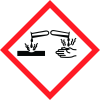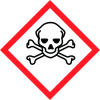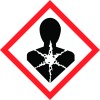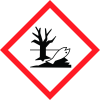Hydroxylamine hydrochloride
Fisher Scientific UK
Revision date : 2020-12-11





General Information
Revision date
2020-12-11
Product name
Hydroxylamine hydrochloride
Product Synonyms
Hydroxylammonium chloride, Oxammonium hydrochloride
CAS No.
5470-11-1
Icons in SDS
Company Information
Company name
Fisher Scientific UK
E-mail address of the competent person responsible for the Safety Data Sheet
begel.sdsdesk@thermofisher.com
GHS Information
Signal word
Danger
Hazard Codes
Hazard statements (CLP)
H290, H301, H312, H315, H317, H319, H351, H373, H400
Hazard statements
Code
Statements
H290
May be corrosive to metals
H301
Toxic if swallowed
H312
Harmful in contact with skin
H315
Causes skin irritation
H317
May cause an allergic skin reaction
H319
Causes serious eye irritation
H351
Suspected of causing cancer
H373
May causes damage to organs through prolonged or repeated exposure
H400
Very toxic to aquatic life
Precautionary statements
Code
Statements
P260
Do not breathe dust/fume/gas/mist/vapors/spray.
P273
Avoid release to the environment.
P280
Wear protective gloves/protective clothing/eye protection/face protection.
P301+P310
IF SWALLOWED: Immediately call a POISON CENTER/doctor/...
P302+P352
IF ON SKIN: wash with plenty of water.
P305+P351+P338
IF IN EYES: Rinse cautiously with water for several minutes. Remove contact lenses if present and easy to do - continue rinsing.
Section 2
Physical hazards
Substances/mixtures corrosive to metal Category 1 (H290)
Health hazards
Acute oral toxicity Category 3 (H301) Acute dermal toxicity Category 4 (H312) Skin Corrosion/Irritation Category 2 (H315) Serious Eye Damage/Eye Irritation Category 2 (H319) Skin Sensitization Category 1 (H317) Carcinogenicity Category 2 (H351) Specific target organ toxicity - (repeated exposure) Category 2 (H373)
Environmental hazards
Acute aquatic toxicity Category 1 (H400)
Hazard statements
see section 16 H290 - May be corrosive to metals H301 - Toxic if swallowed H312 - Harmful in contact with skin H315 - Causes skin irritation H317 - May cause an allergic skin reaction H319 - Causes serious eye irritation H351 - Suspected of causing cancer H373 - May cause damage to organs through prolonged or repeated exposure H400 - Very toxic to aquatic life May form combustible dust concentrations in air
Signal word
Danger
Precautionary statements
P301 + P310 - IF SWALLOWED: Immediately call a POISON CENTER or doctor/physician P302 + P352 - IF ON SKIN: Wash with plenty of soap and water P260 - Do not breathe dust/fume/gas/mist/vapors/spray P273 - Avoid release to the environment P280 - Wear protective gloves/protective clothing/eye protection/face protection P305 + P351 + P338 - IF IN EYES: Rinse cautiously with water for several minutes. Remove contact lenses, if present and easy to do. Continue rinsing
2.3 Other hazards
Substance is not considered persistent, bioaccumulative and toxic (PBT) / very persistent and very bioaccumulative (vPvB) May form explosible dust-air mixture if dispersed Toxic to terrestrial vertebrates

